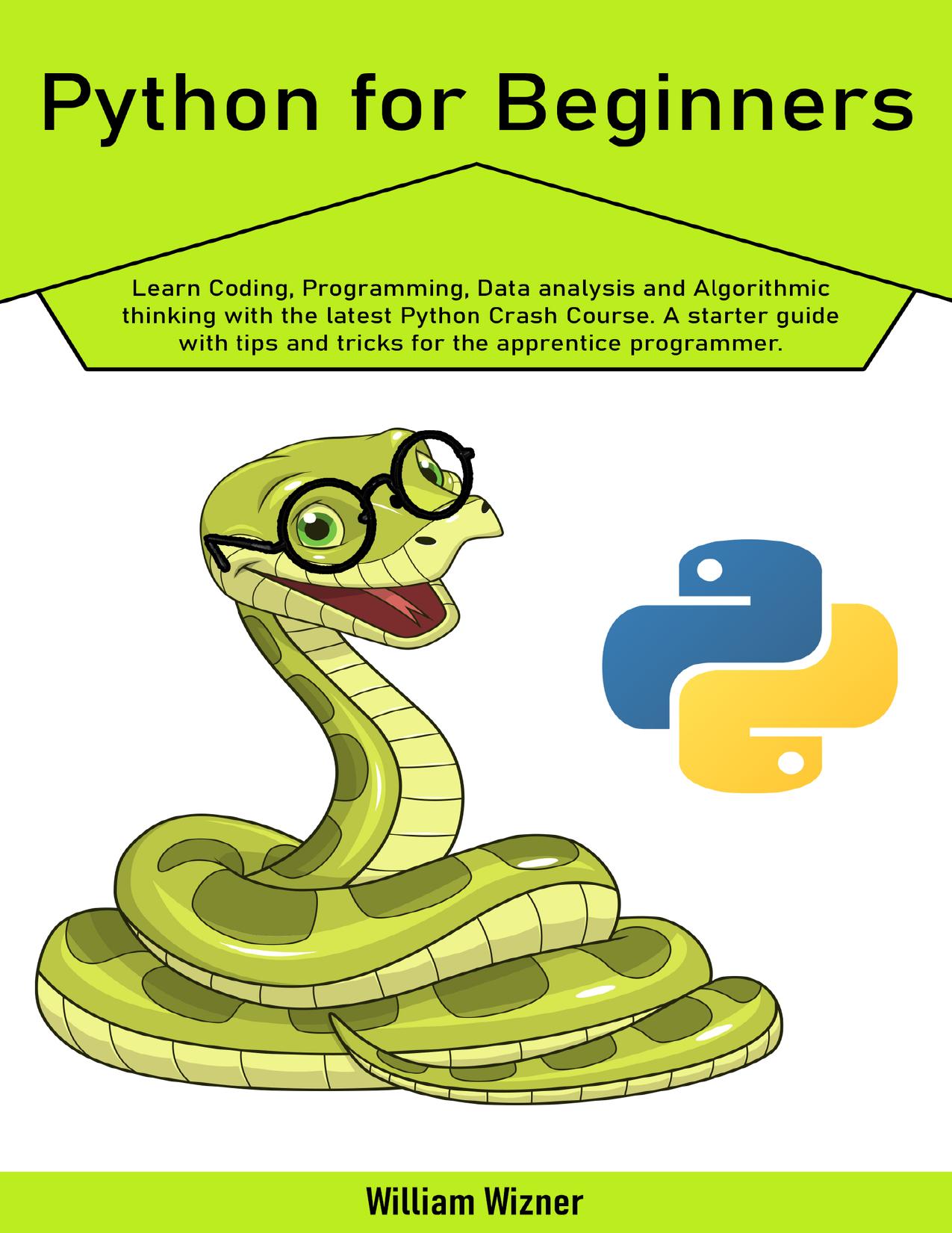Python for beginners: Learn Coding, Programming, Data analysis and Algorithmic thinking with the latest Python Crash Course. A starter guide with tips and tricks for the apprentice programmer. by Wizner William

Author:Wizner, William [Wizner, William]
Language: eng
Format: epub, pdf
Published: 2020-07-20T16:00:00+00:00
Give this a shot before you look below for an answer to this exercise prompt.
If you’ve given this a shot, your answer might look something like this:
favorite_food = input ("What's your favorite food? :")
favorite_animal = input ("What about your favorite animal? :")
favorite_movie = input ("What's the best movie? :")
print ("Favorite food is: " + favorite_food + "\n" +
"Favorite animal is: " + favorite_animal + "\n" +
"Favorite movies is: " + favorite_movie)
We’ve covered a lot of ground in the first quarter of this book. We’ll begin covering some more complex topics and concepts. However, before we move on, let’s be sure that we’ve got the basics down. You won’t learn the new concepts unless you are familiar with what we’ve covered so far, so for that reason, let's do a quick review of what we’ve learned so far:
Variables - Variables are representations of values. They contain the value and allow the value to be manipulated without having to write it out every time. Variables must contain only letters, numbers, or underscores. In addition, the first character in a variable cannot be a number, and the variable name must not be one of Python’s reserved keywords.
Operators - Operators are symbols which are used to manipulate data. The assignment operator (=) is used to store values in variables. Other operators in Python include: the addition operator (+), the subtraction operator (-), the multiplication operator (*), the division operator (/), the floor division operator (//), the modulus operator (%), and the exponent operator (**). The mathematical operators can be combined with the assignment operator. (Ex. +=, -=, *=).
Strings - Strings are text data, declared by wrapping text in single or double-quotes. There are two methods of formatting strings; with the modulus operator or the. format () command. The “s,” “d,” and “f” modifiers are used to specify the placement of strings, integers, and floats.
Integers - Integers are whole numbers, numbers that possess no decimal points or fractions. Integers can be stored in variables simply by using the assignment operator.
Floats - Floats are numbers that possess decimal parts. The method of creating a float in Python is the same as declaring an integer, just choose a name for the variable and then use the assignment operator.
Type Casting - Type casting allows you to convert one data type to another if the conversion is feasible (non-numerical strings cannot be converted into integers or floats). You can use the following functions to convert data types: int (), float (), and str ().
Lists - Lists are just collections of data, and they can be declared with brackets and commas separating the values within the brackets. Empty lists can also be created. List items can be accessed by specifying the position of the desired item. The append () function is used to add an item to a list, while the del command and remove () function can be used to remove items from a list.
List Slicing - List slicing is a method of selecting values from a list. The item at the first index is included, but the item at the second index isn’t.
Download
Python for beginners: Learn Coding, Programming, Data analysis and Algorithmic thinking with the latest Python Crash Course. A starter guide with tips and tricks for the apprentice programmer. by Wizner William.pdf
This site does not store any files on its server. We only index and link to content provided by other sites. Please contact the content providers to delete copyright contents if any and email us, we'll remove relevant links or contents immediately.
Deep Learning with Python by François Chollet(12894)
Hello! Python by Anthony Briggs(10140)
The Mikado Method by Ola Ellnestam Daniel Brolund(10037)
OCA Java SE 8 Programmer I Certification Guide by Mala Gupta(9997)
Dependency Injection in .NET by Mark Seemann(9534)
Algorithms of the Intelligent Web by Haralambos Marmanis;Dmitry Babenko(8540)
Grails in Action by Glen Smith Peter Ledbrook(7903)
Test-Driven iOS Development with Swift 4 by Dominik Hauser(7871)
Becoming a Dynamics 365 Finance and Supply Chain Solution Architect by Brent Dawson(7825)
The Well-Grounded Java Developer by Benjamin J. Evans Martijn Verburg(7783)
Microservices with Go by Alexander Shuiskov(7590)
Practical Design Patterns for Java Developers by Miroslav Wengner(7503)
Test Automation Engineering Handbook by Manikandan Sambamurthy(7446)
Angular Projects - Third Edition by Aristeidis Bampakos(6893)
Secrets of the JavaScript Ninja by John Resig Bear Bibeault(6657)
The Art of Crafting User Stories by The Art of Crafting User Stories(6366)
NetSuite for Consultants - Second Edition by Peter Ries(6313)
Demystifying Cryptography with OpenSSL 3.0 by Alexei Khlebnikov(6101)
Kotlin in Action by Dmitry Jemerov(5311)
